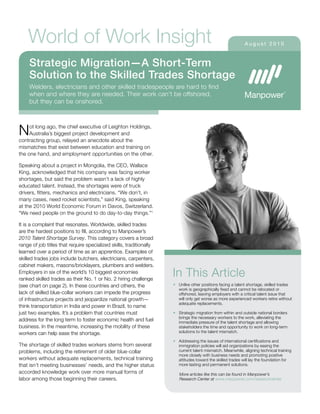The CEO of an Australian construction company said they were facing shortages of trades workers like truck drivers, fitters, mechanics and electricians, not highly educated professionals. A global survey also found skilled trades to be the hardest positions to fill worldwide. Several factors contribute to the shortage, including retiring older trades workers and technical training not meeting business needs. Strategic migration of skilled trades workers both within and across borders can help alleviate shortages in the short-term while longer-term solutions like improving technical training and promoting skilled trades careers are developed.



